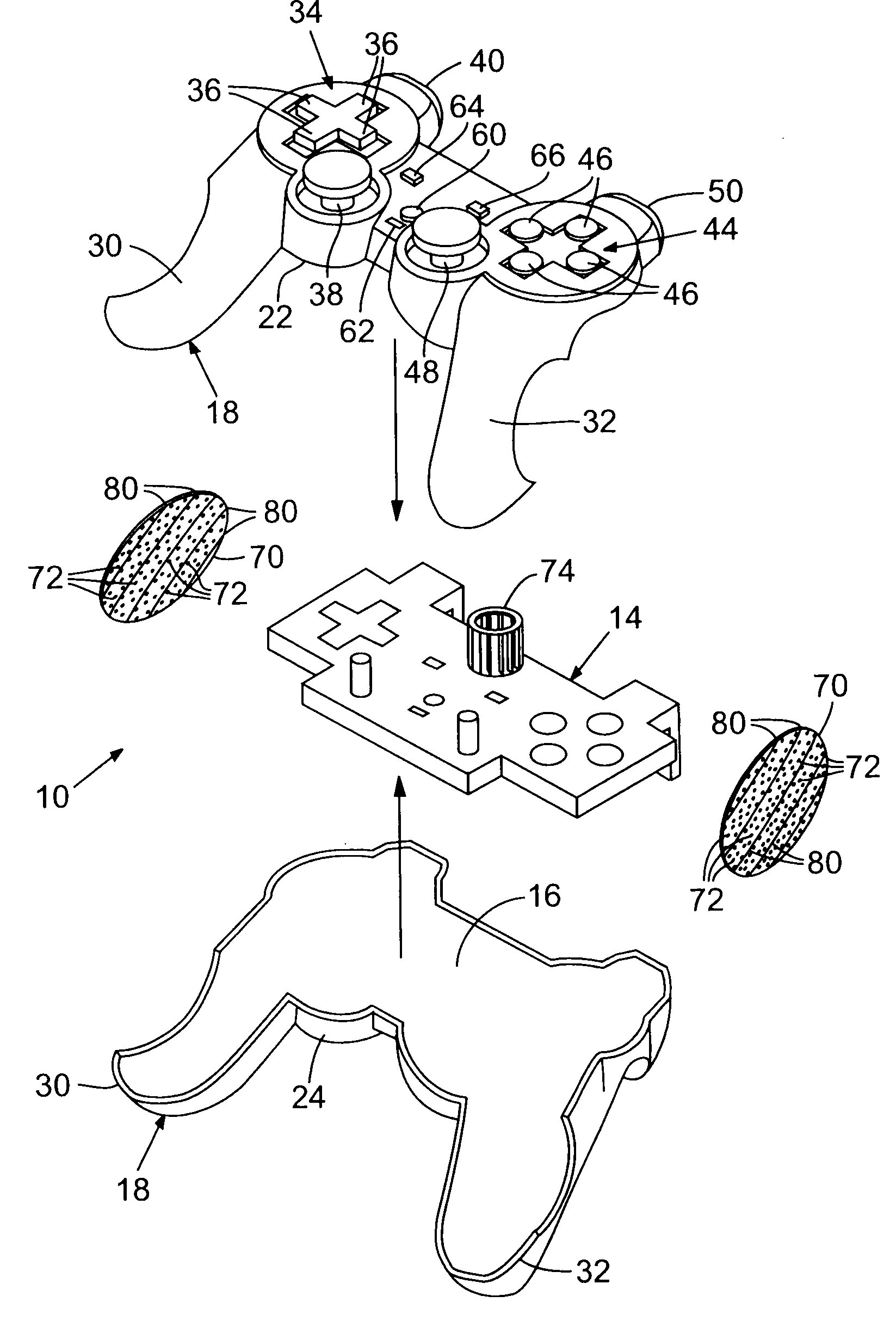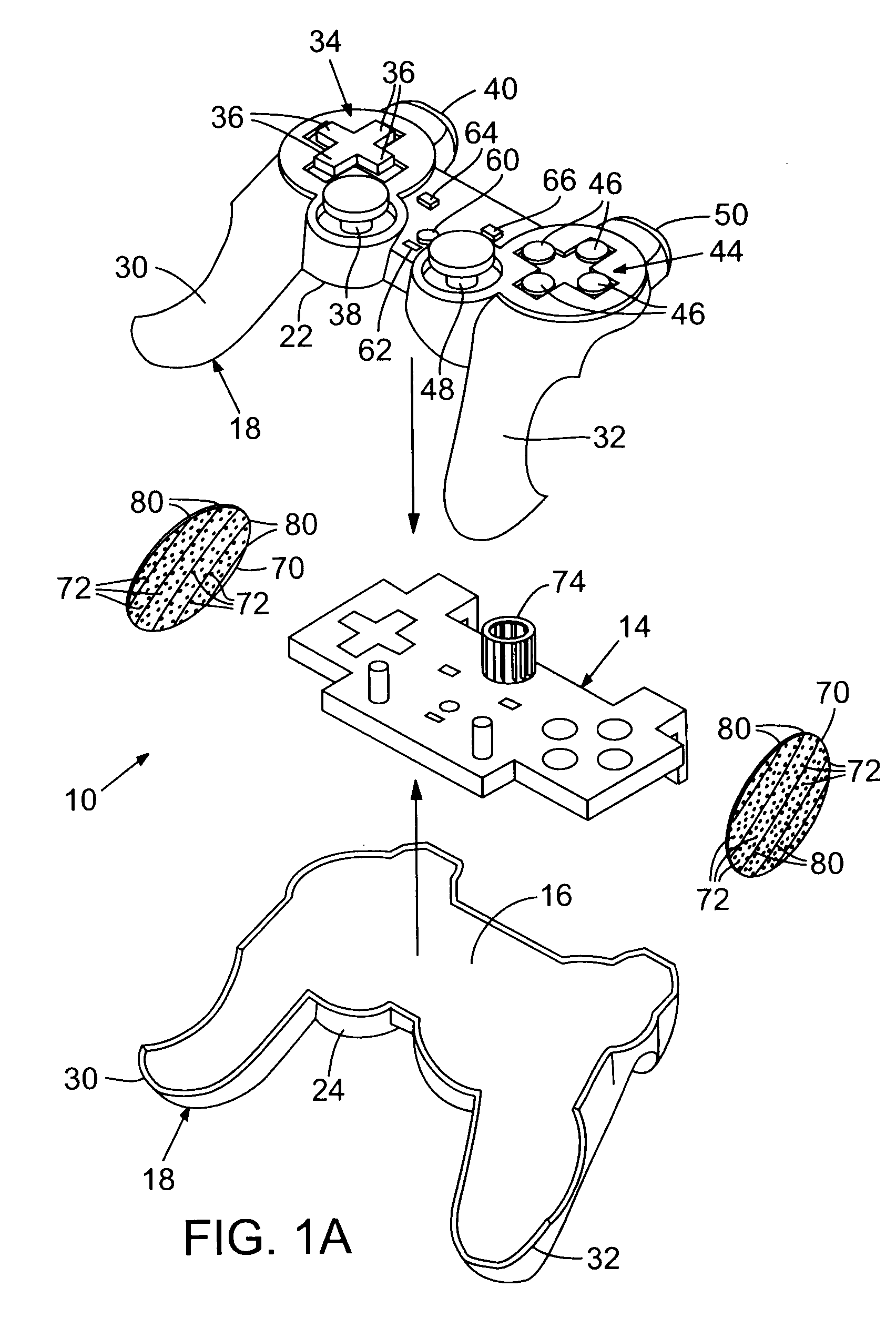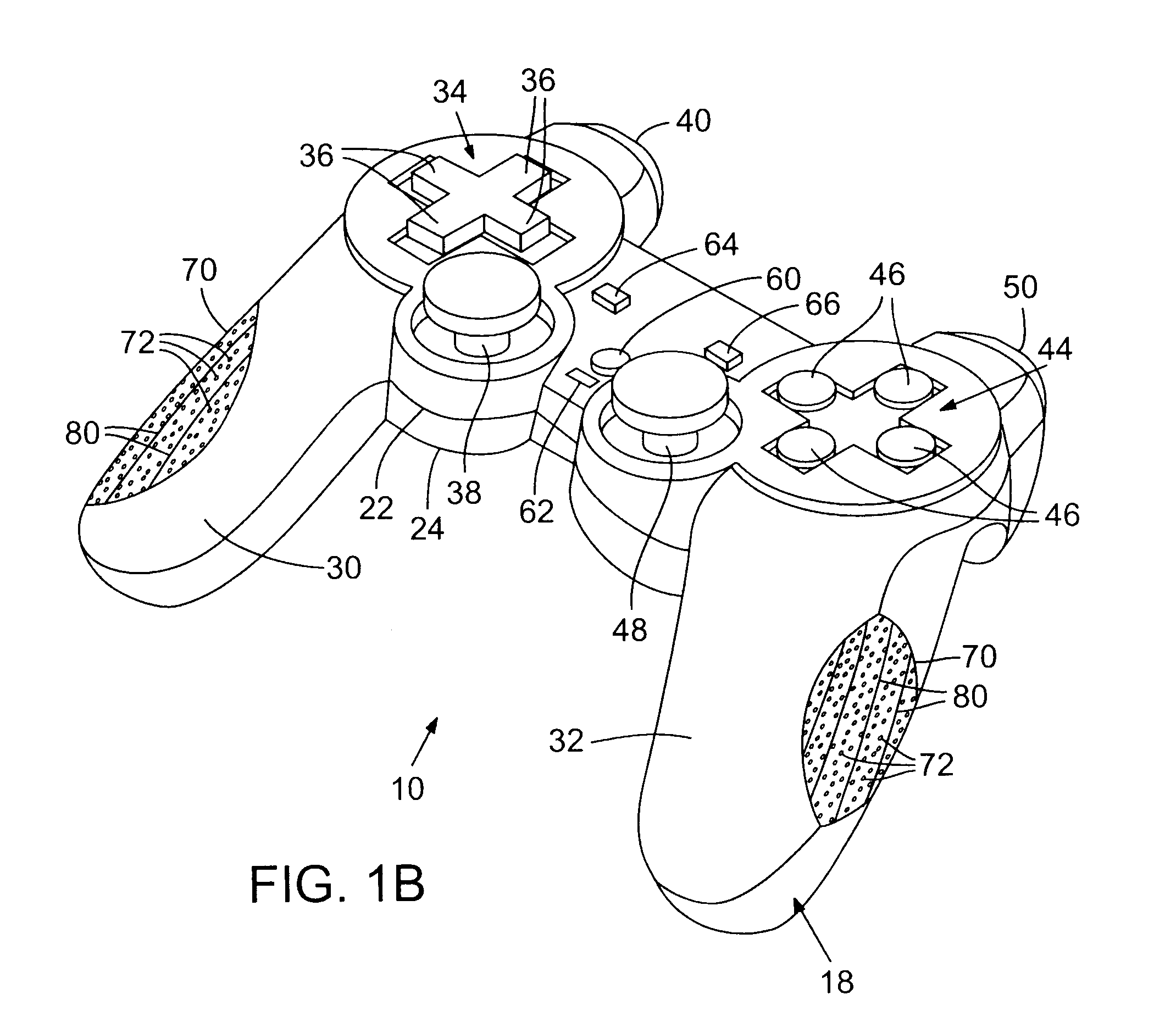Power conserving system for hand-held controllers
a technology of power conserving system and hand-held controller, which is applied in the direction of climate sustainability, instruments, computing, etc., can solve the problems of force a greater cumulative power loss and power drain, and achieve the effect of eliminating a long timeout period and more rapid turning off of the controller
- Summary
- Abstract
- Description
- Claims
- Application Information
AI Technical Summary
Benefits of technology
Problems solved by technology
Method used
Image
Examples
third embodiment
[0021]In a third embodiment, resistance sensing circuitry 102 can be set to sense the average resistance of the user's hands holding controller 10 and apply electrical current appropriately to drive blower mechanism 74 at a higher level of performance to provide greater airflow when a lesser resistance (indicative of perspiring hands of the user) has been detected by sensing circuitry 102. This operational performance can be accomplished by the circuitry of the embodiment of controller 10 shown in FIG. 3.
second embodiment
[0022]Electrical power is applied to resistance sensing circuitry 102 when primary controller circuitry 132 is activated and operational. To save on battery power consumption, no electrical power is typically applied when primary controller circuitry 132 is not operating. Resistance sensing circuitry 102 detects the electrical resistance between members of each pair 104 and 106 of contact sensing strips 80. If the measured resistance is low (indicating high conductivity), then the signals produced at outputs 120 and 122 provide higher electrical power to a left grip blower 124 and a right grip blower 126, thereby driving them at a faster speed to increase airflow output. If the measured resistance is high (indicating low conductivity), then the signals produced at outputs 120 and 122 provide lower electrical power to left grip blower 124 and right grip blower 126, thereby driving them at a lower speed to decrease airflow output. This then equates to more use of power only when gener...
fourth embodiment
[0023]In a fourth embodiment, user adjustable settings are interposed between outputs 120 and 122 to grip blowers 124 and 126 and the electrical power provided by resistance sensing circuitry 102. This configuration enables by user adjustable settings further division into higher and lower airflow outputs, even when sensor block 100 delivers at outputs 120 and 122 signals commanding a higher or lower airflow output from grip blowers 124 and 126.
[0024]The above examples represent only general examples of how sensing of a user's hand can be achieved. Skilled persons will appreciate that other typical sensing circuits such as those implemented with capacitive, inductive, temperature, or pressure sensing technology, alternatively with use of operational amplifiers, comparators, or similar circuitry, can also be employed. The embodiments described demonstrate the primary spirit of the disclosure and are not meant to limit the nature of the concept.
PUM
 Login to View More
Login to View More Abstract
Description
Claims
Application Information
 Login to View More
Login to View More - R&D
- Intellectual Property
- Life Sciences
- Materials
- Tech Scout
- Unparalleled Data Quality
- Higher Quality Content
- 60% Fewer Hallucinations
Browse by: Latest US Patents, China's latest patents, Technical Efficacy Thesaurus, Application Domain, Technology Topic, Popular Technical Reports.
© 2025 PatSnap. All rights reserved.Legal|Privacy policy|Modern Slavery Act Transparency Statement|Sitemap|About US| Contact US: help@patsnap.com



